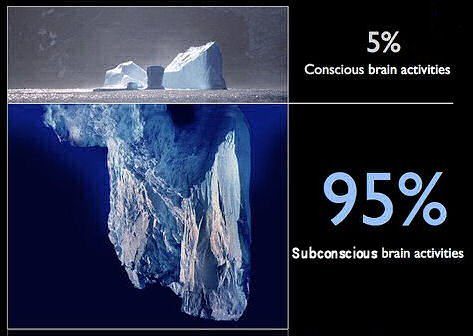
Hypnosis works by communicating with the unconscious mind.
Hypnosis is thought to work by altering our state of consciousness in such a way that the analytical left-hand side of the brain is turned off, while the non-analytical right-hand side is made more alert. The conscious control of the mind is inhibited, and the subconscious mind awoken. Since the subconscious mind is a deeper-seated, more instinctive force than the conscious mind, this is the part which has to change for your behaviour and physical state to alter.
Hypnosis is all about direct communication with the unconscious mind, and is the most powerful tool we have for bringing about change at the unconscious level. It can be used in any situation where you need to let go of old patterns of behavior, and learn new ones. For example, a person who consciously wants to overcome their fear of spiders may try everything they consciously can to do it, but will still fail as long as their subconscious mind retains this terror and prevents the client from succeeding. Progress can only be made be reprogramming the subconscious so that deep-seated instincts and beliefs are abolished or altered.
All of the problems that people commonly seek hypnotic help for can be seen in this light. Changing unwanted habits such as smoking or nail biting obviously involves changing a pattern of behavior, but so does something like gaining more confidence or dealing with stress – the unconscious needs to learn “confidence” patterns and unlearn “stress” patterns for specific situations.
So how does hypnosis actually teach the unconscious mind these new patterns of behavior? Broadly speaking the hypnotist is aiming to do at least one of two things. First of all, they aim to help the client perceive things in a different and more helpful way. Phobias are a good example. When somebody has a phobia, their unconscious mind has labeled an object or situation as literally life-threatening. Hypnosis can be used to reframe that object or situation in a more realistic way, as something that is inherently safe, or at least non-threatening.
Reframing takes place every time the unconscious receives and accepts new information through hypnosis. Learning better ways to deal with stress, breaking a dependence on cigarettes or alcohol, developing the ability to speak to the opposite sex without blushing, even learning to relax more deeply – these are all reframes, in that they literally create a different world for the client, one in which the old ways of going about things no longer apply.
The second hypnotic strategy is mental rehearsal of preferred behavior or a preferred future. Through the use of guided imagery, the hypnotist is able to re-create the preferred behavior in rich and vivid detail, so that the client experiences it in their imagination as if it were actually happening. Somebody who is severely stressed at work, for example, will experience a typical day feeling calm and in control.
Hypnosis works, then, by shaping our perception of reality by dealing directly with the unconscious mind, the seat of most of our problems, and most of our solutions too.

